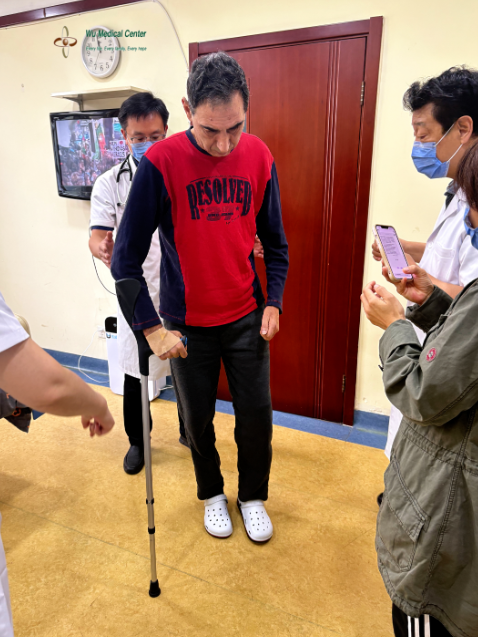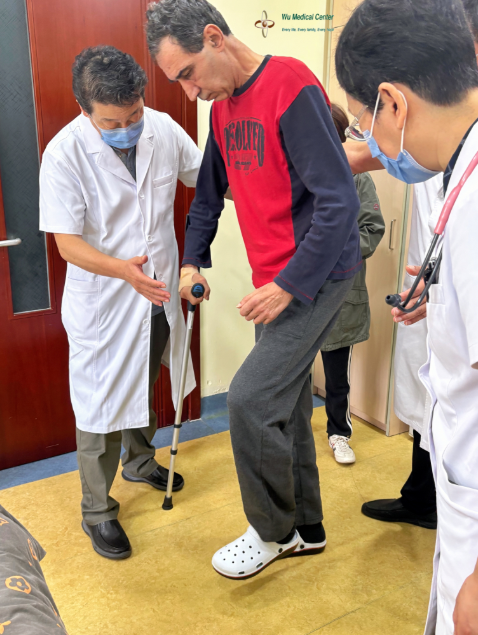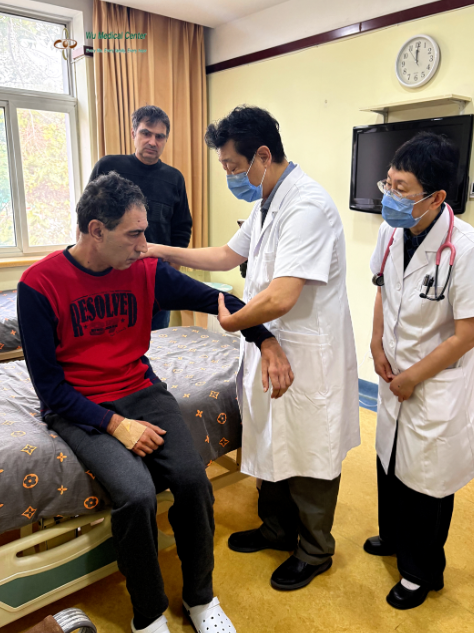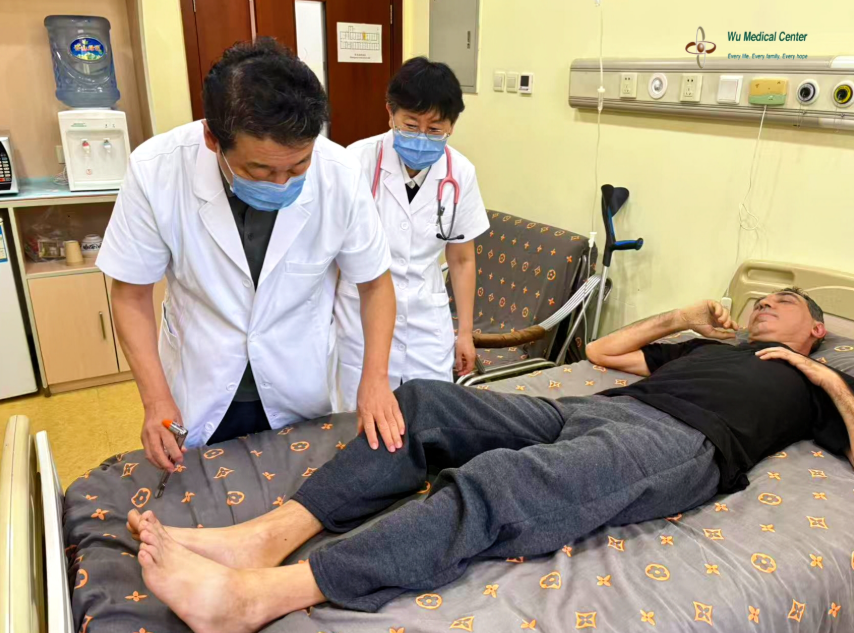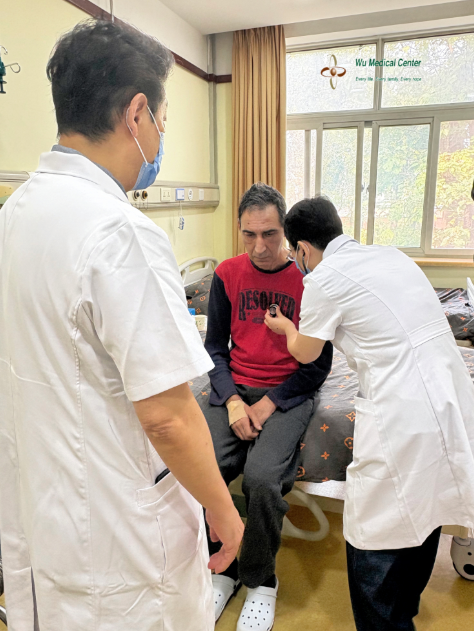Lyubomirov Ivan-Amyotrophic Lateral Sclerosis (ALS)-(Bulgarian)
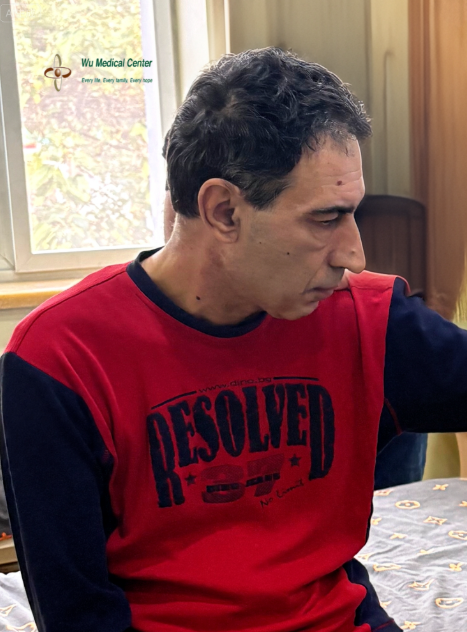 Patient Name: Lyubomirov Ivan
Patient Name: Lyubomirov Ivan
Gender: Male
Age: 55 years old
Nationality: Bulgarian
Diagnosis: Amyotrophic Lateral Sclerosis (ALS)
Admission Situation:
The patient was admitted due to "progressive dysarthria, swallowing difficulties, and limb weakness for 1.5 years, worsening in the past 2 months," diagnosed with "Amyotrophic Lateral Sclerosis." The patient experienced significant speech weakness and unclear articulation, with prolonged sentences being broken and incoherent. He had weakness in all 4 limbs, particularly in both hands, with the left hand being more affected, rendering him unable to write. His lower limbs were stiff, spastic, and have reduced muscle strength. He stood up slowly from a seated position, could walk short distances slowly using a cane in his right hand, had difficulty turning, could not stand on one leg, and exhibited muscle atrophy in his limbs. His respiratory function was slightly diminished, and he had not yet used a ventilator. Since the onset of the disease, he had lost approximately 15 kg in weight. He previously received vitamin, protein, and testosterone treatment in his home country, which was ineffective, and his condition has continued to worsen.
Admission Examination:
The patient's heart rate was 64 beats per minute, respiratory rate 22 breaths per minute, blood pressure 120/73 mmHg, and oxygen saturation 95%. He was 182 cm tall and weighed 69.6 kg. His development was normal, but he was emaciated. There was mild cyanosis of the lips. Respiratory movement was slightly decreased, and no significant dry or moist rales were heard. Heart sounds were weak, with a regular rhythm, and no significant murmurs in the cardiac valve areas. The abdomen was soft, and the liver and spleen were not palpable below the ribs. There was no edema in the lower limbs.
Neurological Examination:
The patient was alert but appeared weak. His speech was weak, with prolonged sentences being broken and incoherent. His memory and calculation abilities were normal. Pupils were 3 mm in diameter with a brisk light reflex, and eye movements in all directions were flexible. The nasolabial folds and forehead lines were symmetrical. The tip of the tongue could protrude from the lips but moves slowly, and there was moderate atrophy of the tongue muscles. Bilateral soft palate elevation was weak, and chewing ability was diminished. Neck rotation and shoulder shrug strength were adequate. Strength in the left upper limb: deltoid and biceps grade 3+; triceps grade 2; wrist grade 2; grip grade 2-. Strength in the right upper limb: grade 3+ for deltoid, grade 3+ for wrist, and grade 3+ for grip. Strength in both lower limbs: grade 3+. Atrophy was noted in the palmar muscles of both hands and the hypothenar muscles. He raised slowly from a sitting position in bed, could walk short distances with a cane in his right hand, had difficulty turning, could not stand on one leg, and had poor walking balance, making him prone to falls. Deep tendon reflexes in both upper limbs were active, while those in both lower limbs were hyperactive. Muscle tone in both lower limbs was increased, with limited range of motion. He experienced hip joint pain when his legs were abducted about 30 degrees. Bilateral Hoffman’s sign and Babinski sign were positive. Occasional fasciculations were observed. Deep and superficial sensations were normal. His left hand exhibited clumsiness in the alternating movement test due to weakness, and he could not perform opposition with the little finger; the right hand was somewhat better. He had difficulty completing the heel-to-knee-shin test on both sides. Meningeal irritation signs were negative.
Treatment Process:
The patient was admitted with a clear diagnosis of "Amyotrophic Lateral Sclerosis." During the hospital stay, he received treatment involving neural stem cells therapy to repair motor neuron damage, as well as mesenchymal stem cells for neuroprotection, endocrine support, and immune support. He was treated with edaravone, riluzole, neurotrophic factors, reduced glutathione, and CAST therapy, combined with comprehensive rehabilitation treatment.
After Treatment:
The patient's motor function is significantly improved, with an overall enhancement of about 30%, and the progression of the disease is halted. His respiratory function is improved, his speaking volume is increased, and episodes of interruption is decreased. Limb strength is improved, with proximal muscle strength in both upper limbs reaching approximately grade 4, allowing him to counter considerable resistance. His left hand grip strength is at grade 3, enabling him to grasp another person's fingers, and at a specific angle, he can pinch a reflex hammer between two fingers; his right hand grip strength reaches grade 4+. His lower limb strength is improved to grade 4; in a supine position, he can maintain a right angle in hip flexion and knee flexion in his left lower limb for over 10 seconds, and for his right lower limb, it is 13 seconds. The stiffness in his hip joints is significantly decreased, and the spasms and pain are disappeared. His range of motion is improved, as he can open his legs to approximately a 60-degree angle without discomfort. The speed and stability of the knee-heel-tapping test are increased compared to before. He requires less support while walking, his walking speed is increased, turning becomes noticeably more flexible, and his stability is improved. His energy levels, physical fitness, and exercise endurance also are increased.
